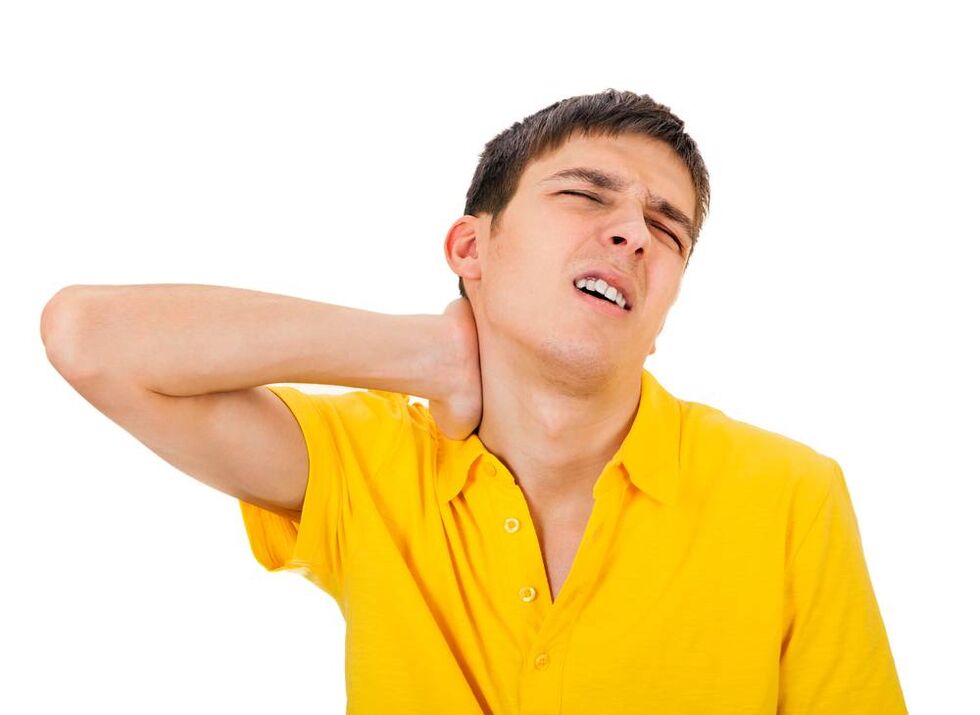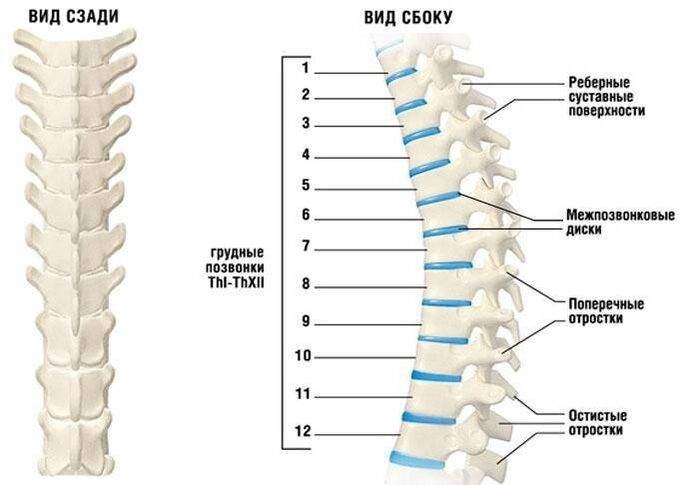According to medical statistics, almost all people over 25 to 30 years are currently complaining about the symptoms of neck osteochondrosis.The disease influences this spine more often than others.Pathology is an advanced degenerative process that works between vertebral slices and swirls in the neck.The disease is the same for men and women.This is a dangerous and complex form of osteochondrosis, since large blood vessels that deliver the brain and a large number of nerve endings are in the throat.Violations of innervation and blood flow lead to a deterioration of the brain against oxygen and nutrients.

Signs of the disease
The symptoms of osteochondrosis of the cervical spine are more pronounced than in other parts of the spine, even with minor damage.This is due to the fact that the vertebrae in the neck are near each other and the intervertebral discs have a low height.Such an anatomical feature helps to compress with osteochondrosis, nerve -ended, spinal cord, blood vessels more often.
General symptoms:
- Pain syndrome;
- Weakness and acceptance of sensitivity in the upper extremities;
- Restriction of neck mobility;
- Violations of the coordination of movements;
- frequent dizziness;
- general weakness;
- Determination of the functionality of the perception organs (hearing, vision, touch, taste).
The pain is located more often in the neck, give the back of the head, your shoulders, your arms.The upper limbs hurt when the nervous spine is trapped by the damaged vertebrae, which is responsible for your inn.The pain in the back of the head is due to spastic contractions of the neck muscles attached to the back main bones and a violation of the blood circulation in this area.
The weakness of the hands is observed in patients when the nerve spine is involved in the pathological process that ensures the innovation of the muscle structures of the upper limbs.The restoration of mobility and a characteristic crunch, when the neck is turned or inclined, arise when bone growth occurs on the cervical vertebrae, the height of the intervertebral discs, the joints between the vertebrae are affected.
The vertebrae in the neck have cross processes that form a channel in which the artery that feeds the brain runs.With osteochondrosis of the cervical spine, the vertebrae are moved, the connective tissue grows on it.This leads to the compression of the neck artery, a deterioration in blood supply to the cerebellum and the back of the brain.As a result, a person has often disturbed dizziness, coordination of movements and general weakness.In advanced cases, if the artery is involved in the pathological process or is strongly promoted, the supply of cerebellar blood, the occipital part and the brain stem deteriorates considerably.In this case, the functionality of the organs of hearing and seeing, the deafness of the tongue and fingers is reduced.
Signs of the disease depend on which the eight vertebrae is influenced by a dystrophic or inflammatory process.Diseases of sensitivity and movement lead to damage to the cerebrospinal roots that affect certain vertebrae.Depending on this, the following manifestations of cervical osteochondrosis are observed:

- The first vertebrae - the neck and the occipital part of the head are deaf, its sensitivity decreases;
- The second - pain in the crown and neck can be felt;
- The third pain can be felt, and the sensitivity is reduced in this part of the neck, in which the pressed spine is located in the spine, which reduces intensity of the taste sensations and language impairments are present.
- The fourth pain radiates in the shoulder, shoulder blade, the patient is disturbed by heart pain, breathing disorders and the tone of the neck muscles decreases;
- Fifth - pain is observed in the neck that was given to the outer surface of the shoulder;
- The sixth - pain in the neck is broadcast into the shoulder blade, feels in the forearm and in the thumb;
- Seventh pain is given to the shoulder blade, the back of the shoulder, forearm and finger (from second to the fourth) pain;
- The eighth pain spread to shoulder from the neck, forearms and little fingers.
Depending on the prevalence of the lesion, four degrees of osteochondrosis of the cervical spine differ.This is not the stage of the disease, but the severity of the symptoms, since the pathological process, which vertebrae it affects it, is common.
- Clinical symptoms are missing in the first degree or manifest minimally.The patients complain about slight pain and tighten during the movements of the head.The treatment started at this stage of the disease will be effective.However, people often ignore disturbing symptoms or do not feel them so that they do not consult a doctor.
- The deterioration of the pathological process improves symptoms.In the second stage, the pain becomes more pronounced, the upper limbs, shoulder leaves.In this level in the development of the degenerative process, the height of the intervertebral disc is reduced, the nerve fiber is trapped.This becomes the cause of the increase in pain.The second degree of osteochondrosis of the cervix region is characterized by the occurrence of headaches, a deterioration of the fountain, a decrease in work ability.
- The third degree of cervical osteochondrosis differs by the formation of a hernia of the affected intervertebral disc.The mobility of the neck is limited, with the patient having severe pain.With this spread of the pathological process, the pain becomes constant and radiates to the upper limbs.The tension of the muscles bound to the occipital bones can be felt.The patients complain about frequent dizziness, general weakness, deafness of the hands.
- The fourth degree of cervical osteochondrosis is diagnosed if the intervertebral disc is completely destroyed by a dystrophic process.It is replaced by fiber tissue, which leads to a significant restriction of mobility.The spinal cord flying in the neck and the blood vessels are affected.Such changes are characterized by a significant deterioration in blood supply to the cerebellum and the occipital of the brain.Oxygen hunger leads to a violation of the coordination of movements, hearing impairment, vision, language, language disorders.
Treatment methods
If you are looking for a doctor when the first alarming symptoms occur, unpleasant unpleasant sensations in the neck, the reaction of the nervous system prevent the progression of degenerative changes.The treatment of cervical osteochondrosis consists of a complex therapeutic measures.Below:
- Take medication;
- Massage;
- Physiotherapy sports lessons;
- Physiotherapeutic methods.
Pharmaceutical therapy
Doctors prescribe anti -inflammatory medication to reduce the pain intensity, reduce the inflammatory process and the swelling of the nerve spine.Chondroprotectors restore the damaged cartilage fabric in the intermediate disk.Musorelaxants relax the muscles of the neck and relieve cramp.Medicines to improve blood circulation help to resume the brain's blood supply.B -Vitamine activate the metabolism in nerve tissues.The doctor can prescribe analgesic with intensive pain.If the patient has a pronounced pain syndrome, the parenteal analgesics are inserted.After the pain subsides, they switch to tablets.
Physiotherapeutic methods
Physiotherapy is an effective way to combat osteochondrosis of the cervix region.It is essential to treat this disease with such techniques, whereupon the following results are achieved:
- The pain intensity decreases;
- The restoration of the affected bone, cartilage and muscle tissue is activated;
- Cramp and tension in the muscles are removed;
- An inflammatory process is stopped;
- The release of oxygen and nutrients to the affected area and the brain improves.
The following types of procedures are most effective in the treatment of osteochondrosis:
- Pharmaceutical electrophoresis (the affected area works with an electrical shock that in addition to activating the blood flow and restoration of tissues improves the delivery of the acting substance of the drug to the tissues affected by degenerative processes);
- Ultrasonic therapy (metabolic processes in the diseased area are activated, the pain decreases, inflammation is stopped);
- Magnetotherapy (relieves swelling from the affected area, which contributes to reducing pain intensity);
- Laser therapy (improves blood circulation in the pathological process has an anti -inflammatory effect).
Medical physical education
Exercises are prescribed during the period in which acute manifestations of the disease are stopped.During gymnastics should not be uncomfortable and pain to be seen.The complex should be carried out by reaching a persistent remission to prevent relapse.

- Take a position on the stomach, increase your head and body and lean against your hands.The back is straight, the breath is deep and even.Linger in a position for one or two minutes and then slowly take the starting position.The number of repetitions is 3.
- The position lies on the stomach and hands on the body.Slowly turn your head and try to touch your ear on the floor.Repeat 6 times on each side.
- Sitting or standing, tend to inhalation and try to reach your chin to the chest.Take your head back gently when exhaling and lift your eyes to the ceiling.The number of repetitions is 10-15.
- A good exercise to strengthen the cervical muscles is to push the forehead against the hands that have been pressed on it.To achieve the effect, you need to press the palms on the forehead and forehead on the palm for 30 seconds.Repeat three times.
- Turn your head in a circle.Keep the exercise slowly and smoothly.In each direction - 10 revolutions each.The occurrence of dizziness during the movements is unacceptable.In this case you should stop immediately.
massage
The course is prescribed by a doctor during the absence of acute pain.Only a specialist with a medical training can do it.In the event of such a disease, it is not recommended to contact non -professional professionals.
Therapeutic effects of the massage of the collar area:
- Blood flow and the lymph in the affected area improves;
- Muscles relax, cramp is removed;
- The pain intensity decreases.
Surgical intervention
The operation is shown, if conservative therapy does not bring any results within six months, the patient is tortured by severe pain, signs of damage to nerve fibers and myelopathy are observed.If the osteochondrosis of the cervix region runs with complications, there is a risk of a stroke, there is a strong press of the spinal cord, then the operation is required.
According to the information, you can use the following types of surgical interventions:
- Endoscopic diskomy - removal of part or a whole intervertebral disc;
- Laminotomy - excision of bone straps and overgrown bone tissue particles (often in combination with laminoplasty - the establishment of artificial plates to expand the vertebral canal);
- Laser vaccination of the disc core - the breakdown of the core of the intervertebral disc with a laser beam at the same time as the destruction of its destroyed fragments;
- Cold plasma nucleoplasty of an endoscope is used by a long and thin hollow needle that is inserted into the intervertebral disc, an electrode that has a cold -layer effect is supplied to the destruction site.
The neck is a complex organ in which large blood vessels, the spinal cord sum.They are easy to damage and use an operation in no more than 5% of cases.Surgical treatment is often accompanied by the development of complications.Below:
- Inflammation process in tissues or membranes of the spinal cord;
- Osteomyelitis;
- The formation of scars that lead to a narrowing of the arterial and spine channels.
The operations on the cervical spine are complex and require a long rehabilitation phase.The patient's restoration after an operation takes a term of six months or more.
prevention
In order to prevent the development of cervical osteochondrosis, this is necessary:
- Monitor the position of the spine and neck;
- lead an active lifestyle, move more;
- In the case of physical exercises, it is necessary to be careful and observe the correctness of the execution, since even minor injuries can affect the state of the musculoskeletal system.
- Buy the correct position of the body during sleep, buy an orthopedic or anatomical mattress.
- Really guessed a job where one person spends a lot of time.
- regularly operate physical culture;
- Monitor the diet, ensure the preservation of all useful minerals required for the bone fortress, in particular magnesium and calcium;
- Studies on the timely detection of osteochondrosis are constantly investigating.
Prevention helps prevent degenerative changes in the cervical spine, protects against pain, dizziness, deafness of the limbs and other unpleasant symptoms.

















































